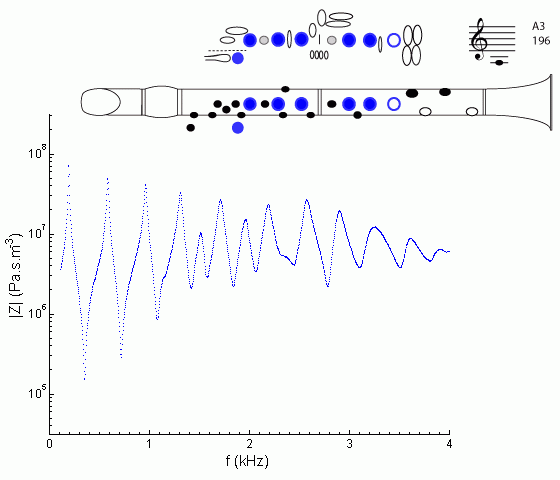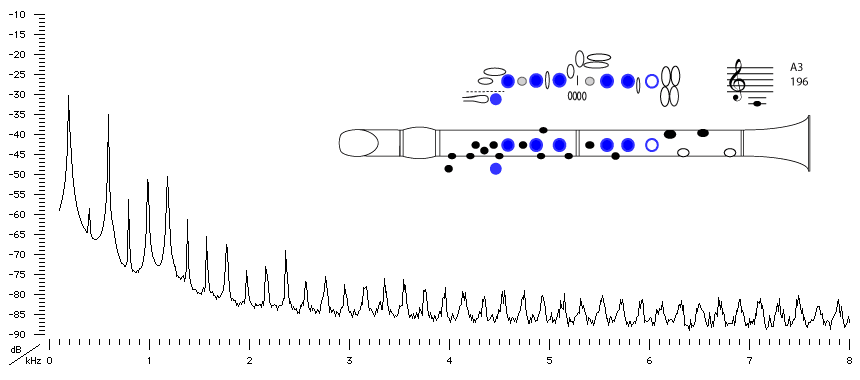| Acoustics of the clarinet |
Bb clarinet |
A3 |

|
Fingering Acoustic schematic Non-specialist introduction
to acoustic impedance Notes are the written pitch. |
Although it doesn't feel like it to your fingers, acoustically speaking, this fingering is actually a cross fingering: it has a closed tone hole below the first open one. This is responsible for the shape being more irregular from about 1.1 to 1.6 kHz than the curves for G#3.
For general comments about the chalumeau register, see E3.

Sound spectrum
of a Bb clarinet
played using fingering for A3.
For more explanation, see
Introduction to clarinet acoustics
|
Contact:
Joe Wolfe
/ J.Wolfe@unsw.edu.au |